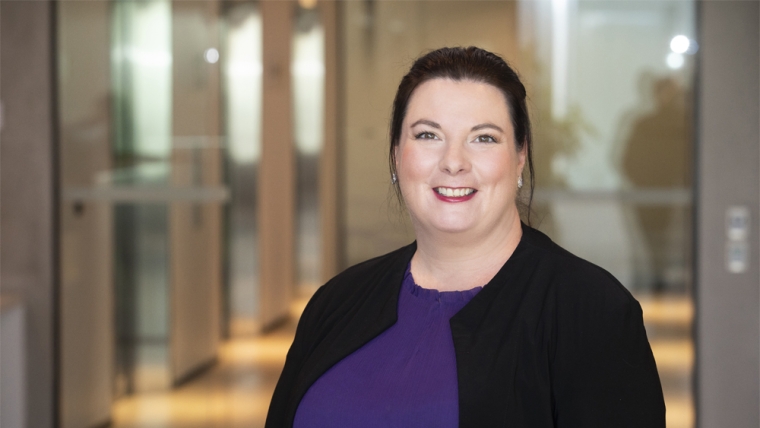
Asking yourself ‘what’s the worst thing that could happen’ and really meaning it isn’t usually on the average person’s to-do list at work – but it’s top of mind everyday for anyone who works in insurance risk management.
Suncorp NZ’s Chief Risk Officer Helen McNeil says one thing is for certain in her role as a CRO: nothing ever stays the same.
“There’s elements of ongoing rhythm and then there’s parts of things that just sort of flare up,” she tells Interest.co.nz.
That’s increasingly becoming more common as insurers across the industry are witnessing climate risks ramp up with pace.
“You never want to be taking too much risk, but you also need to have a go and take a chance sometimes and make sure that you're balancing that properly. So that's really why we sort of exist,” she says.
It’s not just the climate that’s changing at pace, technology is also evolving rapidly.
McNeil describes the burgeoning artificial intelligence (AI) field in the insurance sector as “fascinating”.
“We utilise AI already in ways that perhaps people, including our own people, potentially don't even know – so a lot of our predictive modeling and analysis and tools that we have, that's already built into a lot of those sorts of systems that we use,” she says.
As improvements in technology continue to be harnessed by the insurance industry – particularly with faster and more sophisticated tools – numerous opportunities have arisen from it, especially in areas like claims management.
Suncorp’s goal is to streamline its claims process, and make it quicker and more efficient for individuals.
McNeil says anything a person can do, AI can often do faster. But there's a question around whether AI can actually do it better.
“And so that's where the risk part of the opportunity needs to come into the equation as well, so that we're looking at the potential upsides as well as the potential downsides that come with it.”
The three ‘buckets’
Suncorp breaks climate related risks into three “buckets” – physical, transition and liability risks.
Firstly, there's the physical risk which McNeil includes the heightened frequency and severity of weather events, as seen last year and in response means the general insurer needs to review its underwriting practices and make sure Suncorp NZ is “covering the right properties in the right places”.
Suncorp NZ also has to consider more how reinsurers are responding to the higher chances and costs of claims due to climate change impacts.
Then there's transition risk where McNeil says organisations need to use their strategies to effectively respond to the evolving landscape as balancing customer needs with rising costs presents a significant challenge and there's a risk of companies failing to keep pace with these changes and consequently falling behind.
Lastly, there's the liability risk which includes the potential legal repercussions for insurers who fail to take necessary actions. Recent court cases – like Smith v Fonterra – have shown a growing trend of legal action against industries or companies perceived to be contributing to climate change.
“It's making sure that it's literally part of how we're thinking about things, the sorts of tools that we need, the kinds of people we need to employ. We employ people with a very different background to focus on these sorts of issues compared to what we would have a number of years ago,” McNeil says.
“We need to think about how we actually are helping with messaging that goes out to the likes of the local and central governments and those things, and how we work as an industry more.”
‘Unique lens’
IAG NZ’s Chief Risk Officer Rachael O’Brien says CROs bring a “unique and important lens to decision-making” and need to understand the business they work in more than ever before in the current climate.
“As New Zealand’s largest general insurer, we are very aware of the risk arising from natural hazards. We know that wild weather is increasing in frequency and severity and having a greater impact on New Zealanders,” she says in response to written questions from Interest.co.nz.
Climate-related risks and disasters are reshaping IAG New Zealand’s risk management strategies.
This is through things like the cost of reinsurance and better identification and management of risk.
“How we manage our risk is coming under increasing examination from reinsurers. Their view of New Zealand has changed since last year’s weather events, so the way we manage our risks is more important than ever,” O’Brien says.
“The growing frequency of disasters creates the possibility that insurance will become unaffordable in some communities, and potentially, some may become impossible to insure.”
O’Brien says a different attitude and a much more targeted approach is needed to close the emerging gap between the impacts of New Zealand’s hazards and how they’re managed –which has become a common view across general insurers that operate across the country.
In a statement to Interest.co.nz, Tower’s Chief Risk Officer Sharyn Reichstein says climate impacts and affordability are a “crucial focus area” now and in the future for the general insurer.
“We know Kiwis feel the same way too, our research shows that for 47% of people, a commitment to sustainability and climate action matters when choosing an insurance company,” she says.
Reichstein says new regulatory requirements and advances in areas like AI are also contributing to how Tower adapts risk frameworks but didn’t expand on how.
The general insurer plans to continue mitigating climate risk through its risk-based pricing.
Tower was the first insurer in New Zealand to implement risk-based pricing and customer-facing risk ratings for flood and earthquakes. Tower says landslip and coastal risks are being added to its risk rating tool this year.
*This article was first published in our email for paying subscribers. See here for more details and how to subscribe.

We welcome your comments below. If you are not already registered, please register to comment
Remember we welcome robust, respectful and insightful debate. We don't welcome abusive or defamatory comments and will de-register those repeatedly making such comments. Our current comment policy is here.